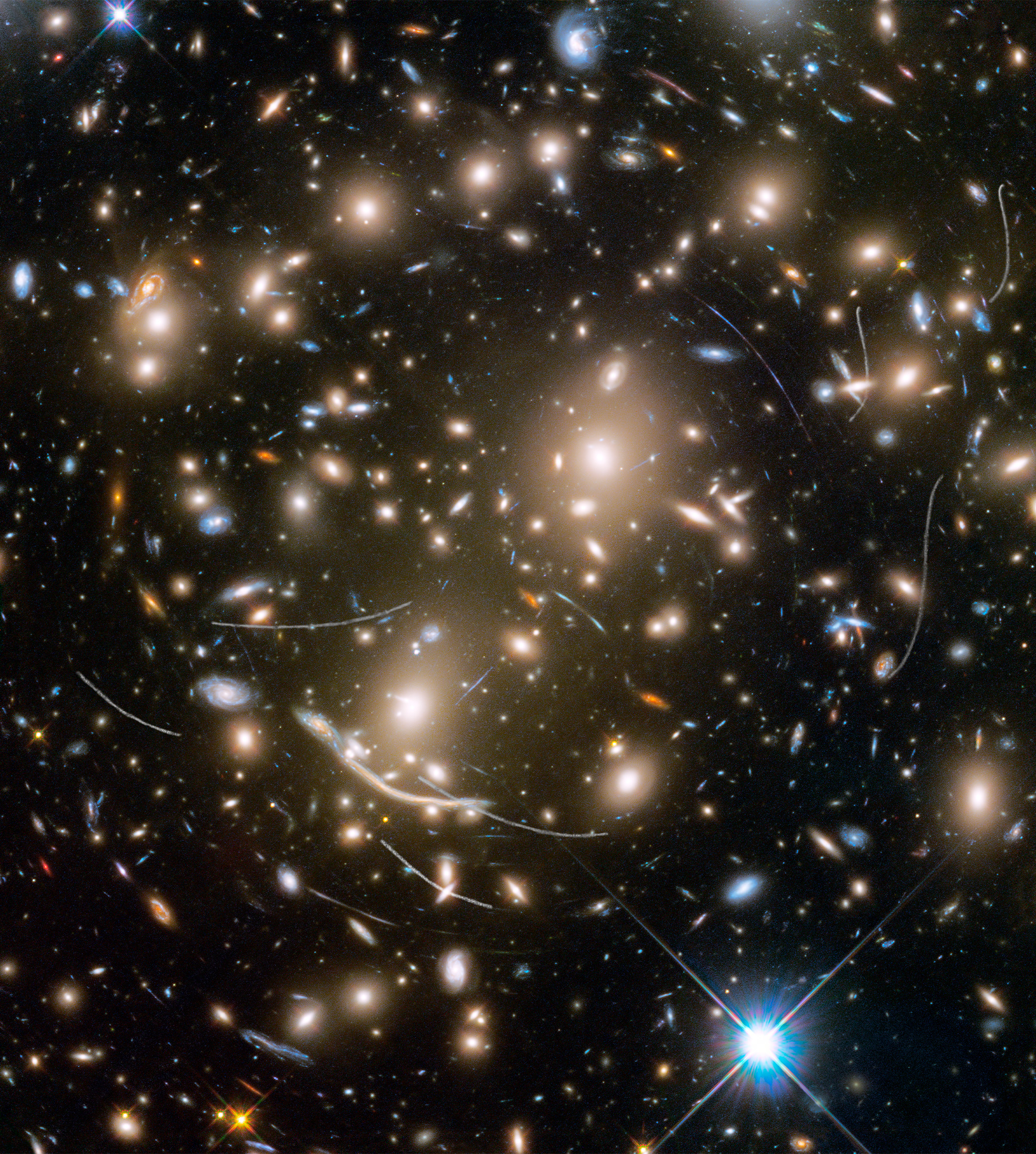Asteroid Photobomb! Space Rocks Invade Hubble Galaxy View
Interloping asteroids snuck into a stunning Hubble Space Telescope image of a distant galaxy cluster, painting S-trails across the foreground of a truly cosmic view.
The Hubble telescope was looking at Abell 370 – a complex of several hundred galaxies linked together by gravity and located 4 billion light-years away — when seven faint asteroids (five of which had never been seen before) moved across the field of view.
Multiple Hubble exposures are typically combined into one image, so the asteroids appear in 20 separate sightings. The space rocks were, on average, about 160 million miles (260 million kilometers) from Earth — nearly five times farther away than Mars at its closest point. (The nearest distance between Earth and Mars is 33.9 million miles, or 54.6 million kilometers.) [The Most Amazing Hubble Telescope Discoveries]
"The asteroid trails look curved due to an observational effect called parallax. As Hubble orbits around Earth, an asteroid will appear to move along an arc with respect to the vastly more distant background stars and galaxies," read a statement from the Space Telescope Science Institute (STScI), which manages Hubble observations.
"This parallax effect is somewhat similar to the effect you see from a moving car, in which trees by the side of the road appear to be passing by much more rapidly than background objects at much larger distances," STScI officials explained in the same statement. "The motion of Earth around the sun, and the motion of the asteroids along their orbits, are other contributing factors to the apparent skewing of asteroid paths."
Each asteroid was found manually by "blinking" images (quickly moving between different images of the same field of view) to look for asteroid motion. The arcs of the asteroid motions are distinct from separate arcs of blue light, which represent distorted images of galaxies that are behind the cluster. (The light from these galaxies is bent by dark matter, scientists said.)
"This picture was assembled from images taken in visible and infrared light," STScI officials added in the statement. "The field's position on the sky is near the ecliptic, the plane of our solar system. This is the zone in which most asteroids reside, which is why Hubble astronomers saw so many crossings. Hubble deep-sky observations taken along a line-of-sight near the plane of our solar system commonly record asteroid trails."
Breaking space news, the latest updates on rocket launches, skywatching events and more!
Follow us @Spacedotcom, Facebook and Google+. Original article on Space.com.

Elizabeth Howell (she/her), Ph.D., was a staff writer in the spaceflight channel between 2022 and 2024 specializing in Canadian space news. She was contributing writer for Space.com for 10 years from 2012 to 2024. Elizabeth's reporting includes multiple exclusives with the White House, leading world coverage about a lost-and-found space tomato on the International Space Station, witnessing five human spaceflight launches on two continents, flying parabolic, working inside a spacesuit, and participating in a simulated Mars mission. Her latest book, "Why Am I Taller?" (ECW Press, 2022) is co-written with astronaut Dave Williams.


